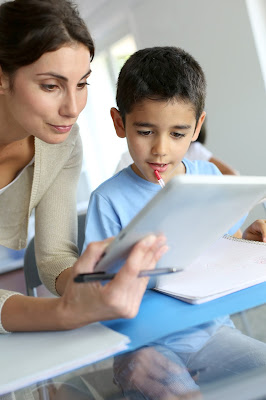To meet the needs of Gen-Z learners, it’s time to move away
from rote learning concepts and practice a more interactive and participatory
learning method that uses immersive techniques. Some forms of Interactive
Learning Content like Augmented Reality and Virtual Reality allow students
and teachers to expand the physical world. While AR mixes the real and digital
worlds, it’s a simple overlay of computer generated information, images and 3d content
into a seamless visual experience, VR is a perception of being physically
present in a non-physical world. It is
done by surrounding the learner with an environment, sound and other stimuli
that provide a complete environment of imagination and interaction to increase
engagement.
The advancement of these types of digital learning content
can result in pedagogical effectiveness of the collaborative and experiential
learning process. Motivation is a critical factor influencing the success and
satisfaction of the learner. AR and VR technologies combine virtual and real
worlds to give users a great visual experience, develop their creativity and
sustain their motivation to perform better. The user feels accountable for
his/her success and failure.
The scope is vast for this technology to be effectively used
in transforming the way learners learn especially in subjects ranging from
geography and history to art and craft. AR and VR aid experiential learning in
many ways through reinforcing concepts and promoting total engagement in the
learning process. Moreover, such technologies facilitate higher learning
retention, for longer periods, and take students on a path of discovery wherein
they apply the learning to their real life world.
A perfect example of using these immersive technologies in
learning is in the field of medicine and more specifically Anatomy. Imagine a
scenario where the students are learning to perform surgery through AR rather
than learning through actual dissections. This not just allows students to
learn by making mistakes but also saves significant amount of money in the
practical approach. Prototypes and physical models are both extremely expensive
and all types are not easy to procure. AR is the way forward here.
Another exciting area is in art and craft. Kids get excited
to see their sketches come to life. Multiple AR based coloring apps are
available, which use their own special coloring pages that become animated 3D
characters in an interactive tabletop world.
AR and VR are currently trending in EdTech and the industry
is experimenting with its optimum usage for K-12 and Higher Ed. Bett
2017- one of the biggest EdTech events in London will focus on AR and is
hosting seminars for the same.
Many K-12 publishers today are not hesitant to invest in
content and technology incorporating both AR and VR to meet the demands of
schools and keep pace with the competition. Magic Software partners with global
publishers to create immersive interactive content
development for GenZ learners.AR and VR are here to stay. Are you ready
with it?

